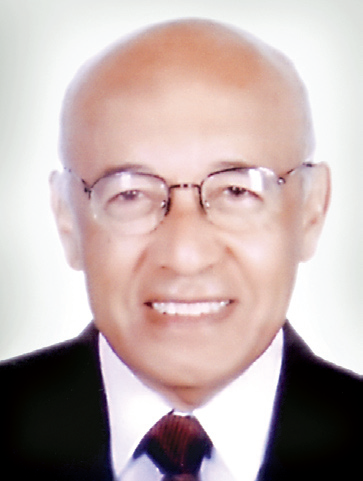president of the Egyptian Hypertension Society Measurement Of Blood Pressure
Prof. Dr M.mohsen Ibrahim, md
prof. of cardiology - cairo university
president of the Egyptian Hypertension Society
Measurement Of Blood Pressure
Need For Accurate Measurement
Many doctors do not measure blood pressure accurately. Technique of measurement has not been taught in a standard manner.
● An error in measurement of only few millimeters of mercury may cause a patient to be misdiagnosed and wrongly classified as either a normotensive or hypertensive.
● Decisions by doctors to start treatment or change treatment plans are based on accurate blood pressure readings.
● Giving approximate or round figures (terminal digit measurement 0 or 5) is not accepted. Blood pressure should be reported to the closest 2 mmHg. Accurate blood pressure measurement depends upon 3 elements:
1. Trained observer or doctor.
2. Calibrated and good functioning instrument (sphygmomanometer).
3. Well-prepared patient.
Factors AffectingThe Accuracy Or BloodPressure Measurement
OBSERVER
This is the individual measuring blood pressure who can be a nurse, a doctor, a medical student, family member or the patient himself. Spe- cialized training is essential which includes:
● Instructions about standardized techniques (see next section).
● Videotape or filmed blood pressure readings.
● Double stethoscope to verify
accurate readings.
● Identify and correct observer’s errors.
Potential errors in BP measurement secondary to the observer:
1. Lack of mental concentration, hurry, interruption and lack of time.
2. Deteriorating visual or auditory acuity.
3. Wrong viewing distance and angle from the sphygmomanometer.
4. Unconscious bias towards raising or lowering the patient’s BP, e.g. to
classify patient as normotensive or hypertensive depending upon the
circumstances and observer‘s impression.
5. Preference for certain terminal digits usually 0 or 5.
6. Incorrect application of stethoscope: Heavy pressure will distort the artery and produce a sound heard below the diastolic pressure.
7. Fast deflation rate of the cuff can cause an inaccurate reading.
EQUIPMENT
Mercury Sphygmomanometer
● Simplest, most accurate and most economic.
● Regular maintenance is necessary.
Manometer
● Column of the manometer should be vertical.
● Mercury level should be at zero when the cuff is detached.
● Airvent at the top of the manometer column should be clean with no blockage.
● Vent cap should be secured to prevent mercury leakage.
The Cuff and Bladder.
● Appropriate cuff size (in relation to patent’s mid-arm circumference) must be used. If the cuff bladder is too wide, the pressure will be underestimated. If it is too narrow, the pressure will be overesti mated.
● Most cuffs are approximately 1 cm wider than the enclosed bladder.
● Most bladders are 12-13 cm wide, for obese arm l5~l6 cm. The recommended bladder length is 23-35 cm depending upon the mid-armcircumference.
● For children, the recommended bladder dimensions are 4-8 cm in width and 13-18 cm in length.
Rubber Tubing
● In good condition, free from leaks.
Minimum length of tubing between the cuff and manometer should be 70 cm and between the inflation source and the cuff should be at least 30 cm.
● Connection should be air tight and easily disconnected.
Control Valve
● When defective may cause leakage.
● Filter may become blocked with dirt when demands excessive effort.
● When closed it should hold the mercury at constant level.
● When released it should allow controlled fall in the level of mercury.
PATENT FACTORS
Blood Pressure Variability
● Blood pressure varies continuously throughout the day.
● Blood pressure is affected by many biological, emotional and environmental factors.
● Clinician should be aware of all the circumstances, which may pro- duce variations in blood pressure and attempt to control or avoid
them before taking the measurement.
Sources OfBloodPressure VariabilitY
I. Changes Related to Sympatho- Adrenal Activation.
A. Instantaneous (seconds):
1. Sleep: Can produce drop in BP within seconds.
2. Arousal: Is associated with immediate elevations in blood pressure.
3. Pain.
4. Dynamic Exercise: Raises systolic pressure and heart rate with little effect on diastolic pressure.
5. Static (Isometric) Exercise: e. g., weight lifting produces a marked increase in both systolic and diastolic pressure.
6. Sexual Intercourse: Produces a dramatic transient rise in blood pressure.
7. Posture: Changes from the


 info@utopiapharma.com
info@utopiapharma.com
 Plot No. (2) Industrial Zone (A7) - formerly Zizinia - Cairo - Ismailia Road - 10th of Ramadan - Sharkia
Plot No. (2) Industrial Zone (A7) - formerly Zizinia - Cairo - Ismailia Road - 10th of Ramadan - Sharkia